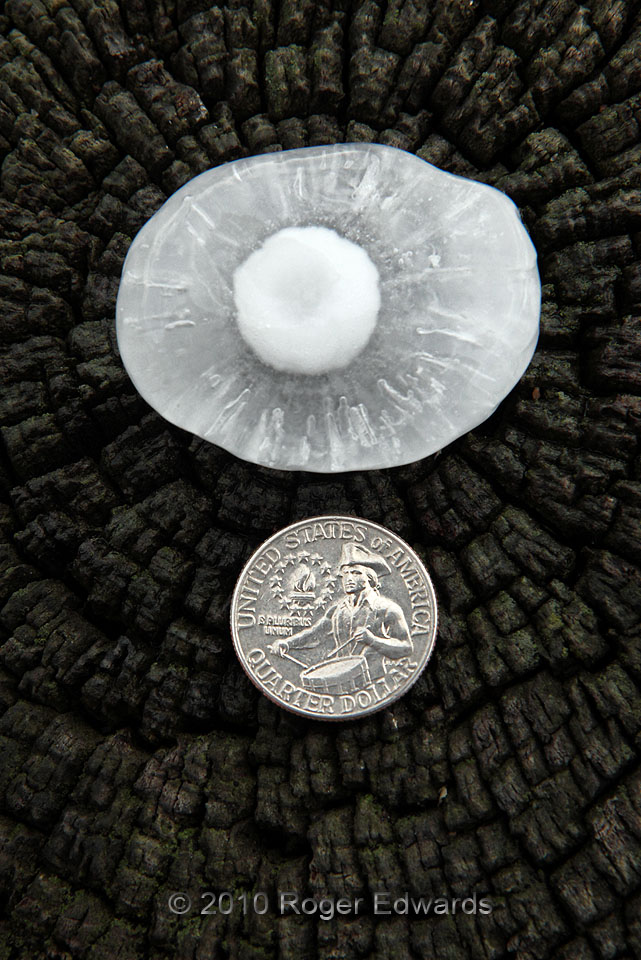One smooth but decidedly severe hailstone lies atop a fencepost, compared to a celebratory coin milled 34 years earlier. Conveniently, a quarter is an inch across; so this hail reached two inches in diameter, qualifying it as “significant” by conventional definition. Hailstones actually should be measured precisely with a ruler or calipers when reporting maximum diameter to the National Weather Service; but something remains oddly novel about photographing hail with traditional objects too. Just by examining this hail closely, one can tell what happened in its stormy manufacture. See the hail within the hail? An already nearly severe, opaque ball of ice, tumbling and spinning high in the thunderstorm, encountered an extremely intense updraft plume filled with large, clear raindrops. Those drops were supercooled–chilled to below the freezing point, but until then, with no nuclei or solid objects to trigger the phase change from liquid to solid. As the original, smaller stone collected numerous the big drops of clear water in quick succession, they froze, but not instantaneously. The fast-growing, water-coated ice ball spun, centrifuging air bubbles outward as the outer layer froze, leaving outward-directed tunnels in the clearer ice.
3 SSE Yuma CO (21 Jun 10) Looking down.
40.0825, -102.702
